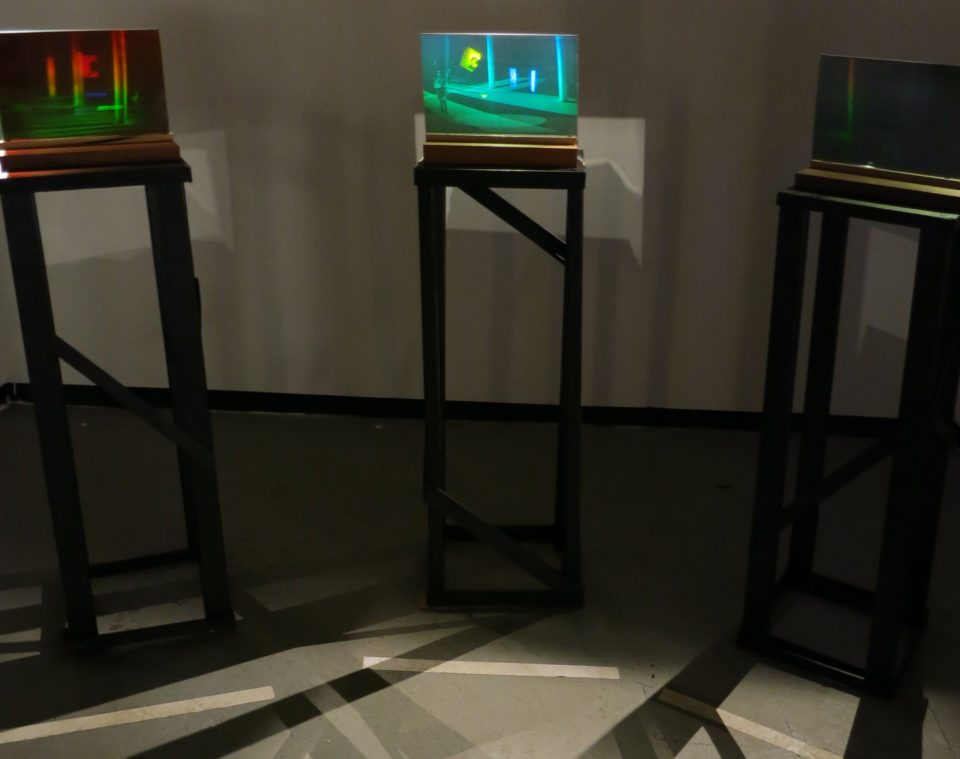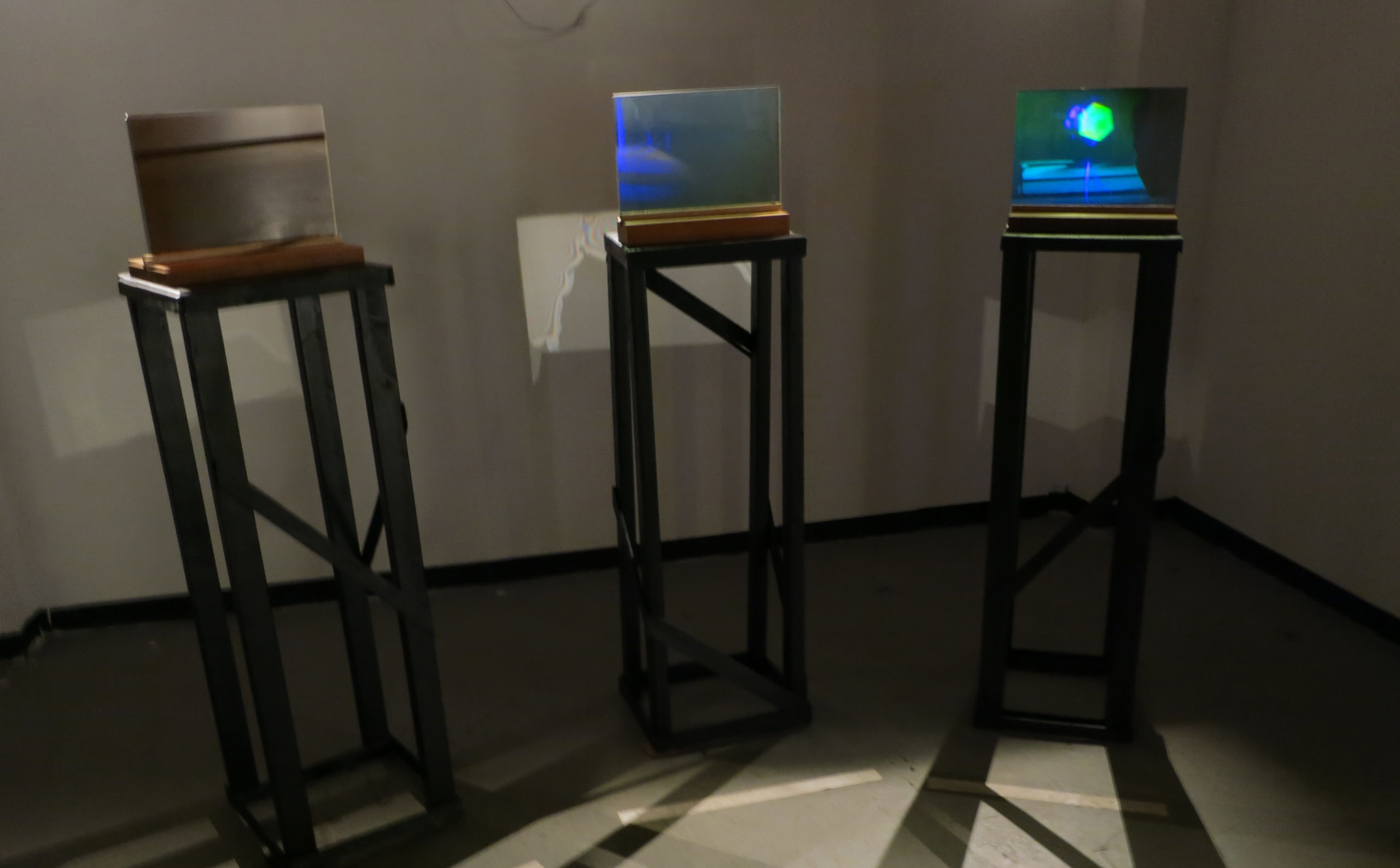The Gallery Triptych is a hologram of a gallery of holograms. At the apex of the viewing triangle, the viewer will be viewing a total of 18 holograms at one time. In panel No. 2, “The Barn” is featured as a hologram of a hologram of a hologram of a hologram of a photograph, extending the viewing depth to a meter. The separated and angled plates of the three panels were intended to envelope the periphery of the viewer. Though I consider this work to be one of my most ambitious and most successful, it remains for me a troublesome effort. It was not until I distorted the entire room, for example, by eliminating a collimated reference beam, that I was satisfied with the depth and presence of the scene.

Dan Schweitzer, The Gallery Triptych, 1982, Three white light transmission holograms; glass 11 x 15 x 1/4″
The Gallery Triptych is a hologram of a gallery of holograms. At the apex of the viewing triangle, the viewer will be viewing a total of 18 holograms at one time. In panel No. 2, “The Barn” is featured as a hologram of a hologram of a hologram of a hologram of a photograph, extending the viewing depth to a meter. The separated and angled plates of the three panels were intended to envelope the periphery of the viewer. Though I consider this work to be one of my most ambitious and most successful, it remains for me a troublesome effort. It was not until I distorted the entire room, for example, by eliminating a collimated reference beam, that I was satisfied with the depth and presence of the scene.
In panel No. 2, the viewer inside the gallery space gazes through the virtual veil of the holographic plate to a point hovering in the real viewer space. Is the tiny viewer in the gallery looking at that point, or is he, in fact, looking at me in mine? For me, the point represented the reference for the three panels, shedding its light into a new arena. This, of course, opened a Pandora’s box of new issues to be addressed on the viewer side of the plate.
I finished my triptych imagery with a newly solidified recording system to project the hexagram in panel No. 3 and for good measure, I projected into the viewer space a phantom of a real viewer, who actually gets in the way of the real viewer’s ability to see the entire gallery space in the panel. I was truly in the viewer space now. And I had brought my characters with me! Though my attempt to bathe the viewer and his periphery in the image was not entirely successful, it opened the door to a new space.
The Gallery Triptych is part of the MIT Museum art collection and was loaned for the exhibition Interference:Coexistence, HoloCenter at the Queens Clocktower, New York City, 2013
https://mitmuseum.mit.edu/collections/collection/art

 Dan Schweitzer
Dan Schweitzer Interference : Coexistence
Interference : Coexistence